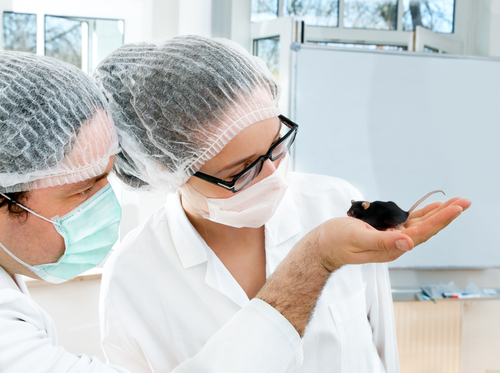Gene Therapy Corrects Irregular Brain Activity in AADC Deficiency, Mouse Study Shows

A generalized dopamine deficiency in aromatic L-acid decarboxylase (AADC) deficiency causes some neurons to be overly active, which may contribute to the motor dysfunction associated with the condition, researchers report. A gene therapy that restores brain dopamine levels seems to repair these abnormalities, their study shows.
The study, “Electrical Abnormalities in Dopaminergic Neurons of the Substantia Nigra in Mice With an Aromatic L-amino Acid Decarboxylase Deficiency,” was published in Frontiers in Cellular Neuroscience.
In AADC deficiency, patients produce low amounts of the AADC enzyme, which is needed for the synthesis of chemical messengers including dopamine and serotonin. As result, severe motor and systemic abnormalities arise, including droopy eyelids, drooling, low blood pressure, low blood sugar, and fainting.
Scientists had previously developed a gene therapy for children with AADC deficiency. The treatment, designed to increase AADC production, was given by injection into the putamen (a brain region involved in motor control).
“Patients exhibited dramatic improvements in motor development and moderate improvements in emotional control and cognitive function after gene therapy. However, the underlying cellular mechanism for the motor disturbances of AADC deficiency remains [elusive],” investigators stated.
Dopamine is essential to motor control. Research suggests that changes in the activity of dopaminergic neurons — those that produce dopamine — within the substantia nigra compacta — a brain structure involved in motor function — lead to motor disorders such as Parkinson’s disease.
AADC-deficient mice were previously demonstrated to exhibit profound dopamine deficiency, poor weight gain because of reduced food intake, and early death. Evidence indicates that gene therapy alleviates these deficits.
In this study, AADC animals were administered neuron-specific gene therapy within 24 hours of birth, leading to the production of extra amounts of the AADC enzyme.
Four weeks later, investigators from the National Taiwan University Hospital assessed the animals’ condition and set up to study the electrical properties of dopaminergic neurons in the substantia nigra compacta of a mouse model of AADC deficiency.
Results showed that gene therapy-treated AADC mice had better survival rates and higher body weight at four weeks of age, in comparison to untreated AADC mice. After treatment, dopamine concentrations increased to levels observed in healthy mice, and serotonin levels had a 50% increase compared to levels found in healthy animals.
Electrophysiological studies revealed that dopamine-releasing neurons fired less and at irregular rates in AADC mice compared to control animals. Such changes were because of alterations in the neuronal membranes’ permeability to ions such as potassium. Gene therapy partially corrected these electrical abnormalities.
When neurons are “activated,” i.e. fire, the generated electrical/chemical activity can be transcribed into waves called action potentials. Action potentials are like waves that move down nerve fibers, communicating the effect of a stimulus from the receptors located near the beginning of the neuron to the end of the nerve cell.
Researchers found that the AADC mice’s neurons that had an irregular firing pattern had these waves altered — higher action potential amplitude, rise slope, decay slope and were quicker to reach a resting state — in comparison to AADC neurons with a regular firing pattern.
The body’s chemical messengers, known as neurotransmitters, can function as inhibitory (e.g. GABA) or excitatory (e.g. glutamate) molecules depending on where in the brain and to which receptor site they bind.
Compared to the healthy animals, brain signals mediated by glutamate increased, while GABA-dependent ones decreased in the AADC animals. For both types of brain activity, gene therapy was able to correct the observed changes, possibly due to an increase in dopamine in the brain.
Scientists also observed a general increase in the expression patterns of genes encoding glutamate and GABA receptors.
In conclusion, restoring brain dopamine levels via gene therapy seems to restore cellular well-being, which could explain the therapy’s earlier positive effects in AADC-deficient patients.






